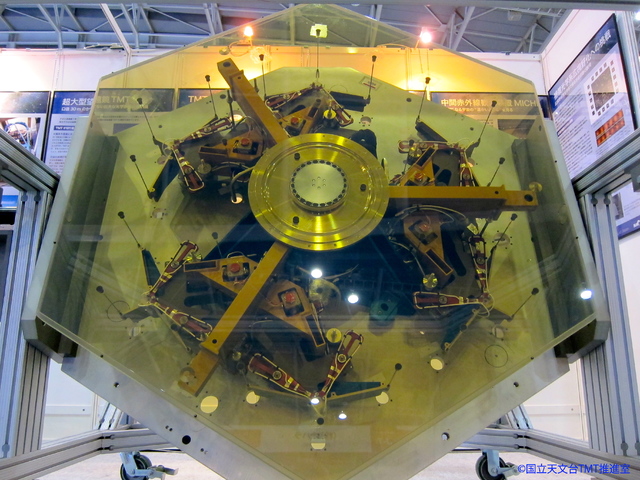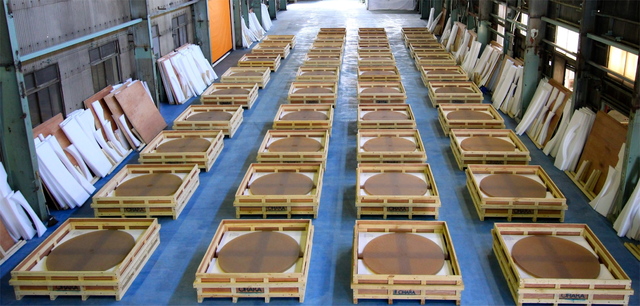Bulldozers at the Thirty Meter Telescope construction site have hardly moved an inch since protests against the $1.4 billion project erupted again on Mauna Kea seven months ago. ADVERTISING Bulldozers at the Thirty Meter Telescope construction site have hardly moved
Bulldozers at the Thirty Meter Telescope construction site have hardly moved an inch since protests against the $1.4 billion project erupted again on Mauna Kea seven months ago.
But other aspects of the project are moving forward, the TMT International Observatory noted Monday.
The Pasadena, Calif.-based nonprofit organization announced more than 100 of the 574 segments that will be produced for the 30-meter-wide primary mirror have been made in Japan.
Fifty of the mirror blanks have been transported to a Canon factory in Utsunomiya, about 70 miles from Tokyo, for polishing. TMT said “coordinated research and development” for additional polishing is underway in China, India and the United States.
The giant mirror is too large to be made of a single piece of glass. The smaller 10-meter Keck telescopes — currently among the world’s largest — on Mauna Kea also are made out of segments, though only 36 each.
TMT’s primary mirror will have 492 hexagonal segments; another 82 spares will be produced.
The primary mirror for an even larger 39-meter telescope being built in Chile will be made of 798 segments.
Partner countries building and funding TMT are Japan, China, India, Canada and the United States.
The project has faced strong opposition from those against building another telescope on Mauna Kea, which many Native Hawaiians consider sacred. It also faces a legal challenge in the state Supreme Court.
Masanori Iye, TMT board vice president, said in a press release that Japan is proud to be part of the project.
“This is an example of how people working cooperatively and sharing ideas can create positive results,” said Iye, a professor at the National Astronomical Observatory of Japan.
The NAO operates the Subaru telescope on Mauna Kea.
Hundreds of astronomers, engineers and technicians are working on the project around the globe, according to TMT.
The telescope is the only giant observatory planned in the northern hemisphere. With 156 times the light-gathering power and 13 times the resolving power of the Hubble Space Telescope, it’s expected to deliver sharper and deeper images of the universe and help detect planets in other solar systems that could host life.
In TMT’s announcement, board chairman Henry Yang also noted the international cooperation involved in the project.
“Japan’s mirror segment production is one of many important production assignments taking place,” he said. “With work currently underway in five different regions, the TMT project is truly and literally a global effort.”
It remains unclear when the project will attempt again to resume grubbing and grading work on Mauna Kea.
As of September, a TMT board member said the telescope still is planned to be operational in 2024.
Email Tom Callis at tcallis@hawaiitribune-herald.com.




